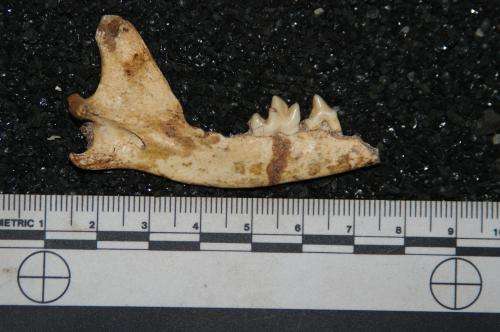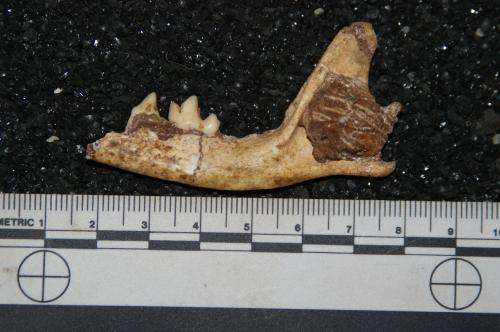This is Dr. Brian Kuhn from the Wits Institute for Human Evolution. Credit: Wits University
Researchers from Wits University and the University of Johannesburg in South Africa, together with international scientists announced on Tuesday, 22 January 2012, the discovery of a two million year old fossil fox at the now renowned archaeological site of Malapa in the Cradle of Humankind World Heritage Site.
In an article published in the prestigious journal Transactions of the Royal Society of South Africa, the researchers describe the previously unknown species of fox named Vulpes Skinneri - named in honour of the recently deceased world renowned South African mammalogist and ecologist, Prof. John Skinner of the University of Pretoria.
The site of Malapa has, since its discovery in 2008, yielded one of the most extraordinary fossil assemblages in the African record, including skeletons of a new species of human ancestor named Australopithecus sediba, first described in 2010.
This is a Malapa fox fossil. Credit: Wits University
The new fox fossils consist of a mandible and parts of the skeleton and can be distinguished from any living or extinct form of fox known to science based on proportions of its teeth and other aspects of its anatomy.
Dr. Brian Kuhn of Wits' Institute for Human Evolution (IHE) and the School of GeoSciences, an author on the paper and head of the Malapa carnivore studies explains: "It's exciting to see a new fossil fox. The ancestry of foxes is perhaps the most poorly known among African carnivores and to see a potential ancestral form of living foxes is wonderful".
This is a Malapa fox fossil. Credit: Malapa Fox Fossil
Prof. Lee Berger, also of the IHE and School of GeoSciences, author on the paper and Director of the Malapa project notes: "Malapa continues to reveal this extraordinary record of past life and as important as the human ancestors are from the site, the site's contribution to our understanding of the evolution of modern African mammals through wonderful specimens like this fox is of equal import. Who knows what we will find next?".
The entire team has expressed their privilege in naming the new species after "John Skinner, one of the great names in the study of African mammals and particularly carnivores. We (the authors) think that John would be pleased, and it is fitting that this rare little find would carry his name forever."
More information: Adam Hartstone-Rose, Brian F Kuhn, Shahed Nalla, Lars Werdelin, Lee R. Berger (2013): A new species of fox from the Australopithecus sediba type locality, Malapa, South Africa, Transactions of the Royal Society of South Africa, DOI:10.1080/0035919X.2012.748698
Provided by Wits University
























